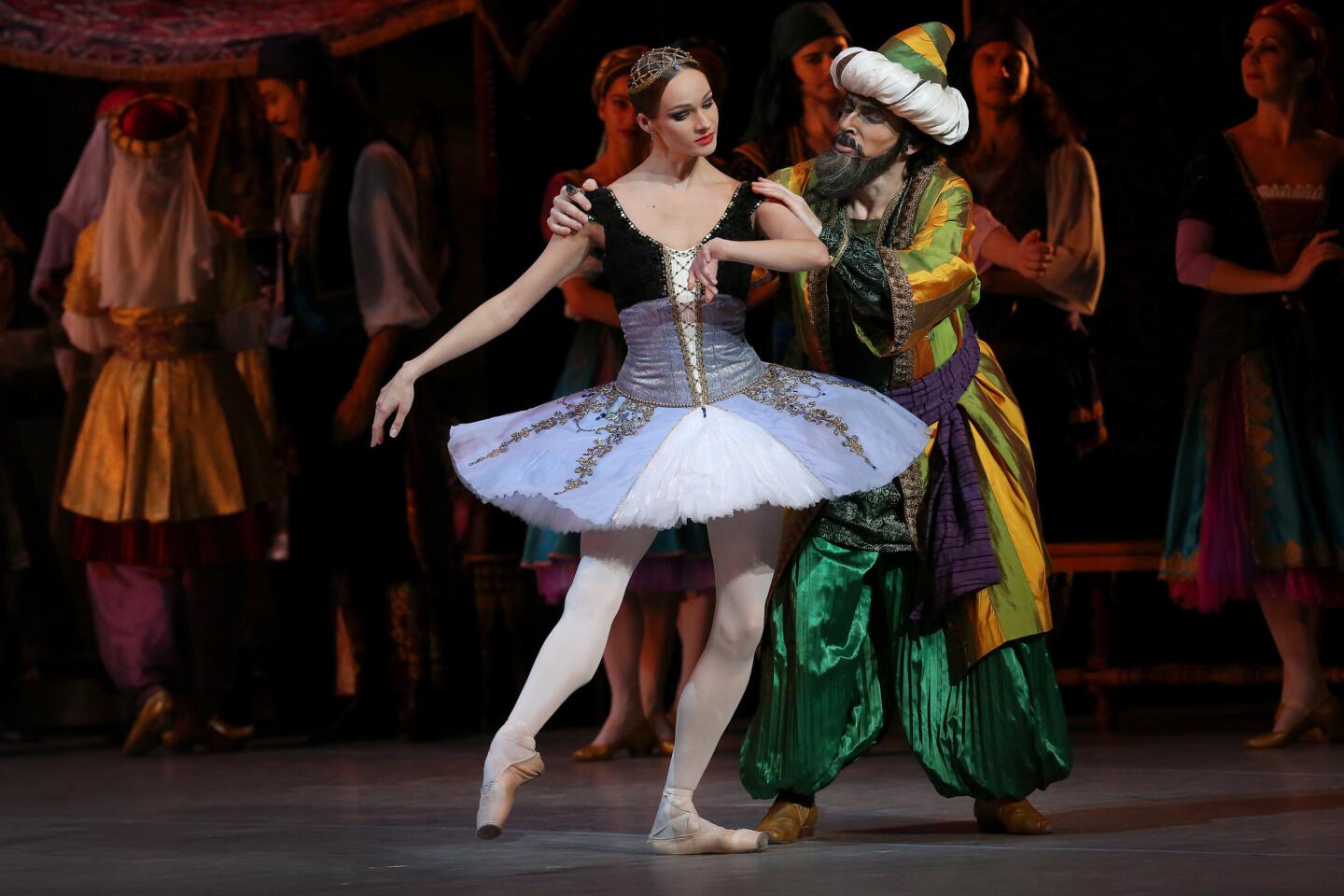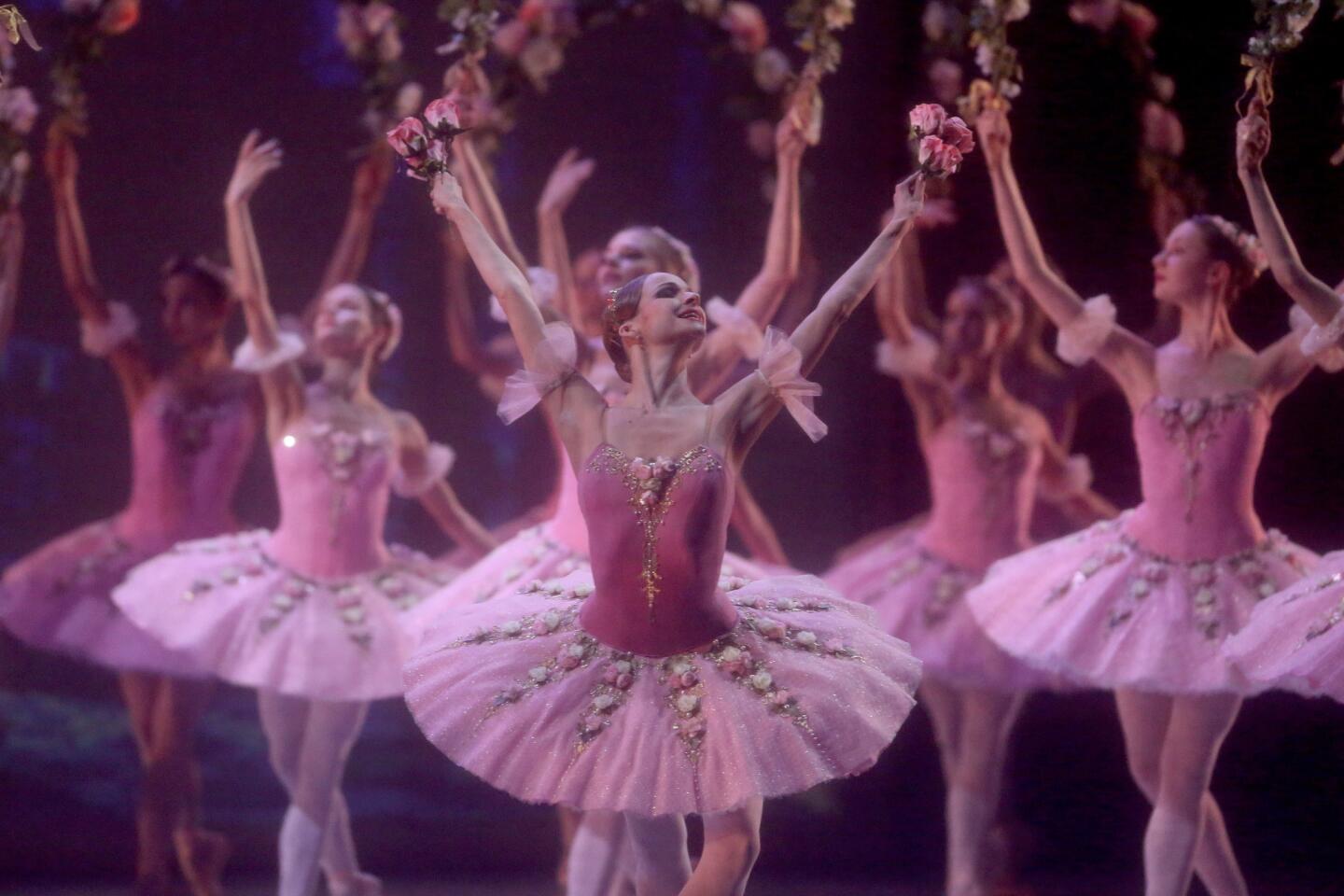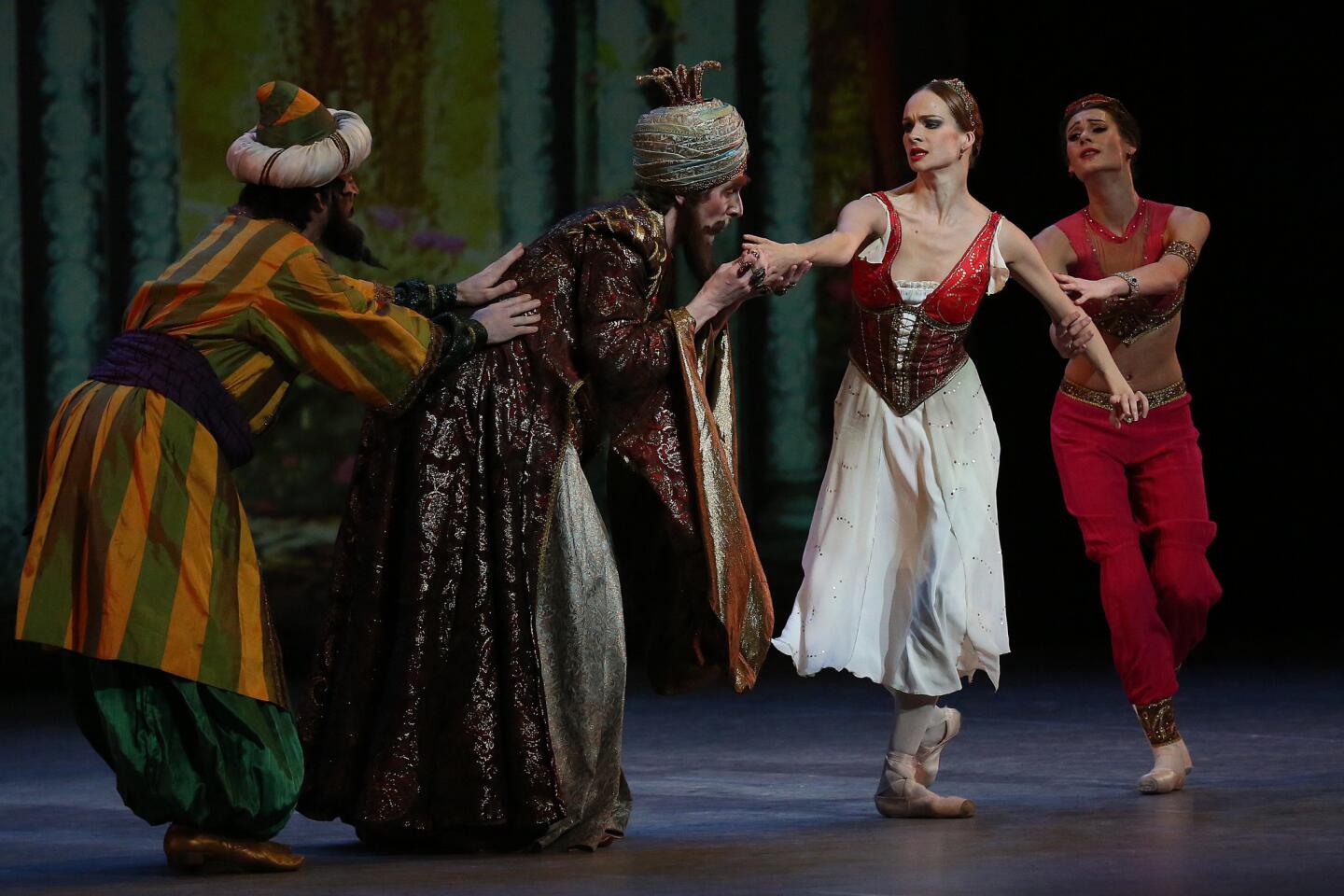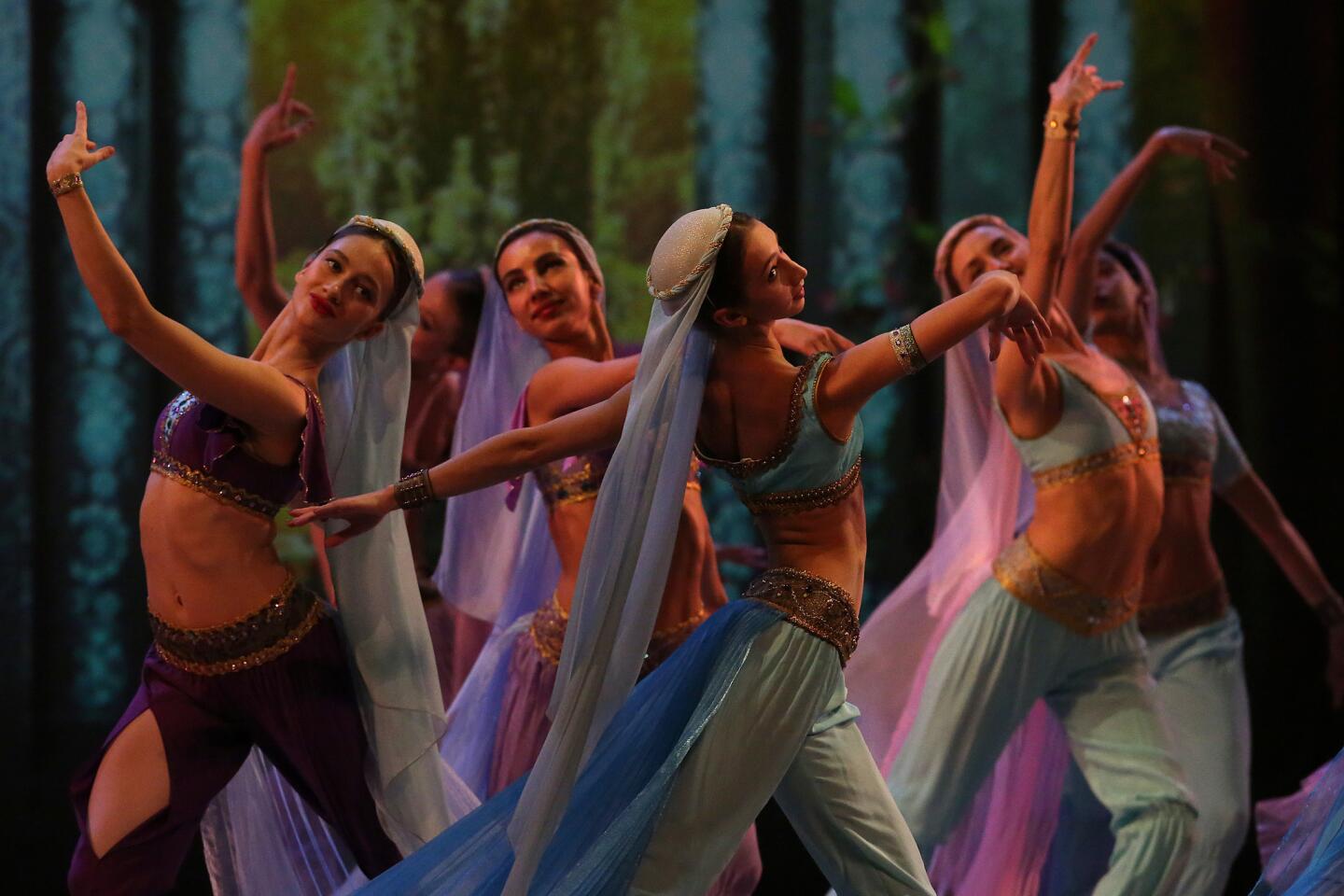Review: St. Petersburg’s Mikhailovsky Ballet revises the pirate-tale classic ‘Le Corsaire’
- Share via
The ballet “Le Corsaire” is a splashy pirate adventure, told through a 150-year-old lens of chivalry and a fascination in Orientalism. Enjoy it for the escapism and the dancing.
That’s the hope. It was the Mikhailovsky Ballet’s turn to present its recently revised “Le Corsaire” at the Segerstrom Center for the Arts in Costa Mesa this weekend, and the Friday evening performance was a mixed affair, on all counts. The St. Petersburg troupe’s ballet master in chief Mikhail Messerer staged the three-act work, which dates to 1856 Paris. It has been redone so many times since that the credits list six choreographers (with a particular debt to Kirov Ballet director Konstantin Sergeyev’s production from 1973), and musical selections from no fewer than eight composers.
SIGN UP for the free Essential Arts & Culture newsletter »
Messerer, whose successful revision of “Flames of Paris” was seen at Segerstrom two years ago, waded through this conglomeration and this time has made some dubious choices. The ballet’s famous, stand-alone pas de deux (returned to its origins as a pas de trois by American Ballet Theatre) has been ripped apart with sections put into different acts; the character Ali the slave is renamed, and done away with as far as the narrative is concerned. Likewise, the secondary female lead, Gulnare, has been reduced to a few solo spins in act three. The female heroine Medora has a throwaway solo in red knickers, as she pretends to a boy. The late, legendary choreographer Marius Petipa’s normally resplendent Jardin Animé, a scene with ballerinas inscribing perfectly meshing geometric figures, is a sadly thin copy.
So what does go well? There’s meaty drama and rivalry between those shifty pirates, Conrad and his friend Birbanto, thanks to extra emphasis on their relationship. The first-act bazaar, with its animated merchants, slaves, townspeople, eunuchs and pirates, bustles colorfully. As we saw with “Flames of Paris,” Messerer brings out the best in his corps de ballet during the character dances, and so these scenes snap with spirit. If you’re going for the exotic, it’s good to go all the way.
And that too was the motto of the evening’s star, power-jumper Ivan Vasiliev. Seen as Ali in ABT’s superior version three years ago at the Dorothy Chandler Pavilion, Vasiliev was Conrad on Friday, and he commanded the stage and his gang of ne’er-do-wells with mighty charisma. Wearing long, shaggy hair, Vasiliev was a believably fun and roguish leader; when he fired himself up to put down a mutiny, you understood why his friend and nemesis Birbanto backed down. Other male soloists were equally enjoyable. With his dark countenance, Alexander Omar brought a dashing wiliness to Birbanto. The tall and effortlessly graceful Victor Lebedev brought a high-toned classicism to the slave variations.
Most of the female soloists, in contrast, were a disappointment, their style dated and their presentation choppy. Ballerina Ekaterina Borchenko performed dutifully as Medora, but she was a cheerless presence, her jaw set, her torso stiff and her poses mannered. Of the three Odalisque soloists, only Svetlana Bednenko registered assurance, bringing excitement to her series of pirouettes. And Anastasia Soboleva turned Gulnare into a flirtatious sprite. The Mikhailovsky women need some special coaching.
No complaints about the orchestra, led by conductor Pavel Klinichev. He and the musicians deserve a round of applause from the dancers, particularly Vasiliev, who dances to his own beat and expects the orchestra to keep up (or slow down) with him.
Tatiana Yastrebova’s costumes, especially the bright dresses and pastel harem pants and bra tops, charmed without overwhelming the scenery, which was limited to props and a series of handsome ceiling beams decorated with striking calligraphy. Rather than set pieces, we had moving digital imagery projected on the backdrop. There’s no shipwreck in this production; Messerer has Conrad and Medora sail off into calm waters, because that’s the way good dreams end, I suppose.
Follow The Times’ arts team @culturemonster.
ALSO
Times theater critic Charles McNulty’s latest reviews
Times architecture critic Christopher Hawthorne’s latest columns
Times music critic Mark Swed’s latest review
Times art critic Christopher Knight’s latest reviews
More to Read
The biggest entertainment stories
Get our big stories about Hollywood, film, television, music, arts, culture and more right in your inbox as soon as they publish.
You may occasionally receive promotional content from the Los Angeles Times.
















